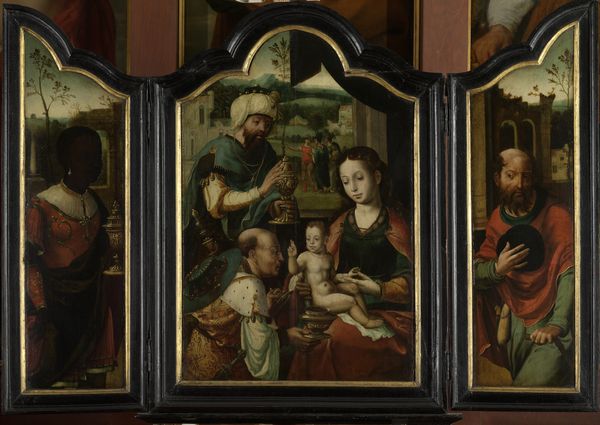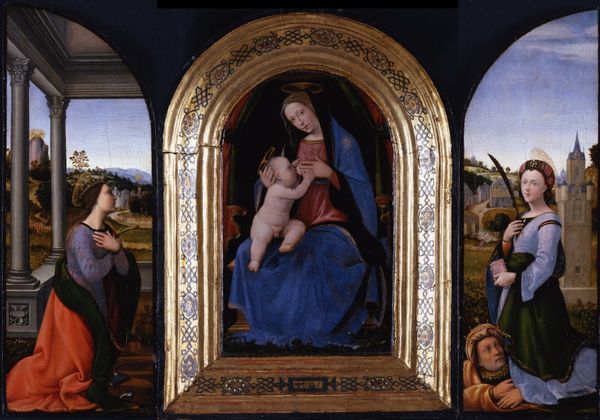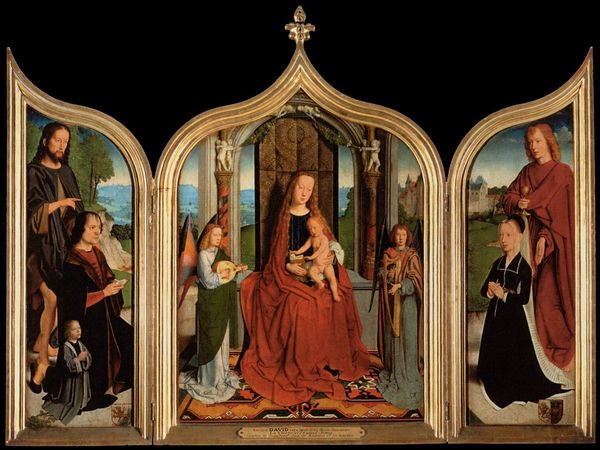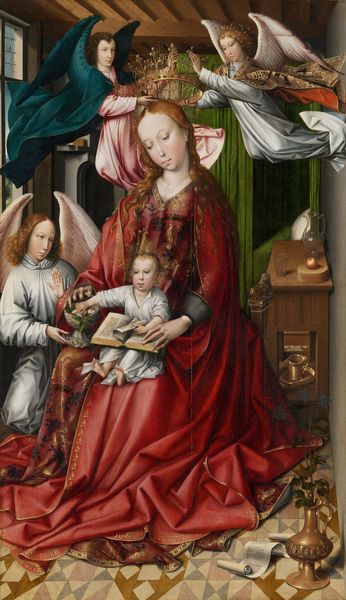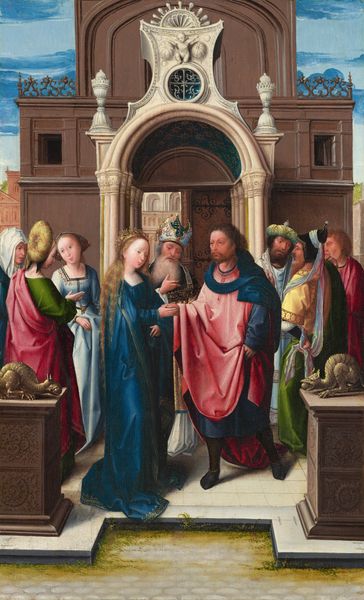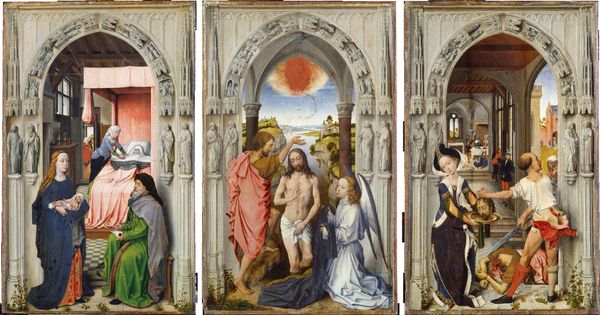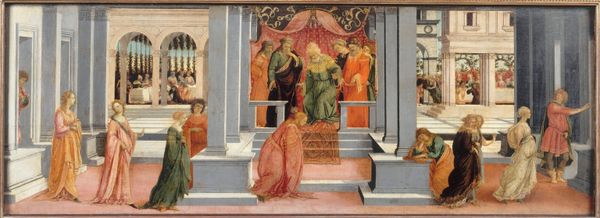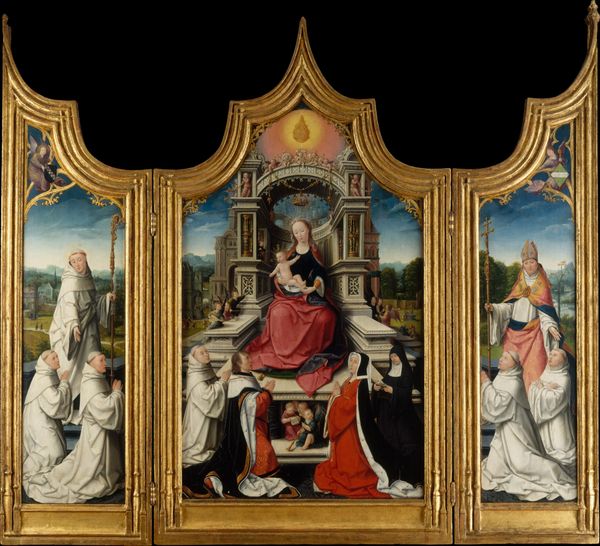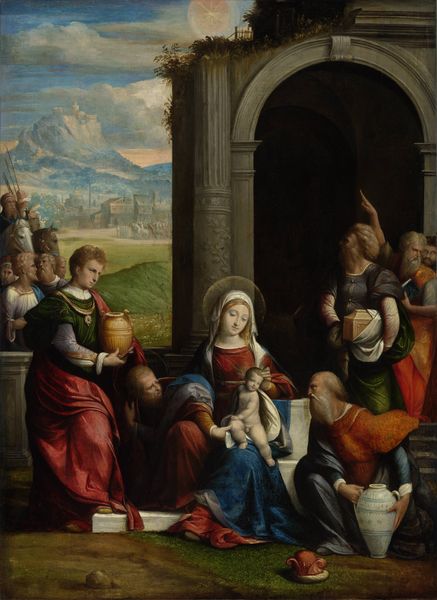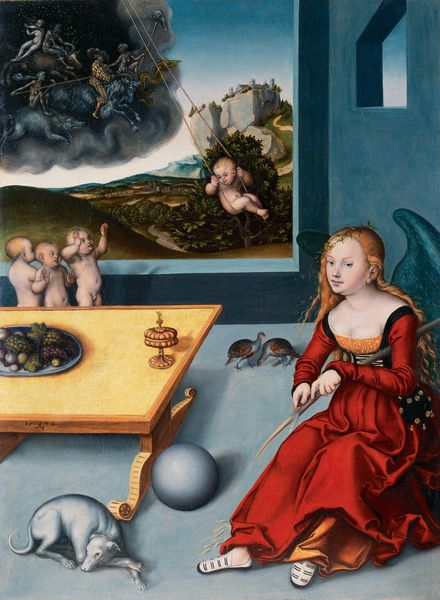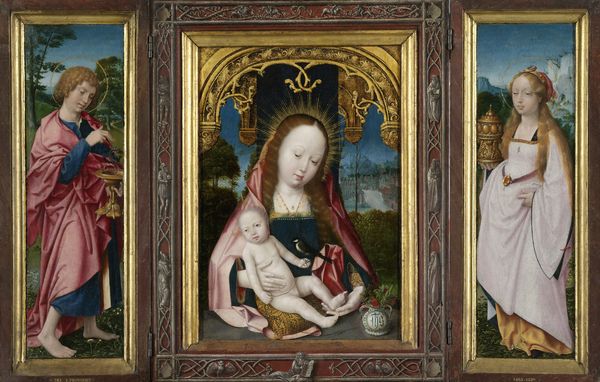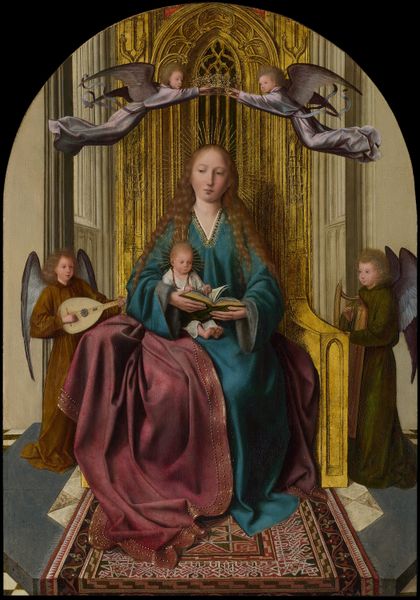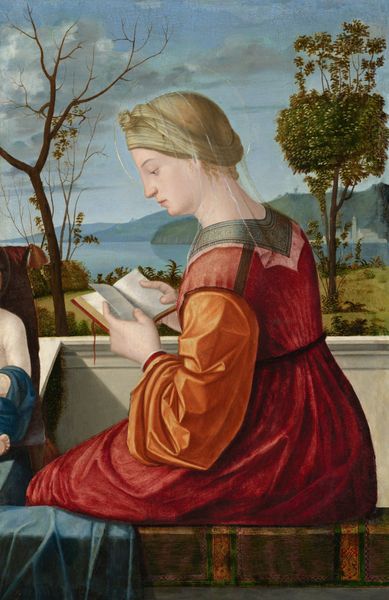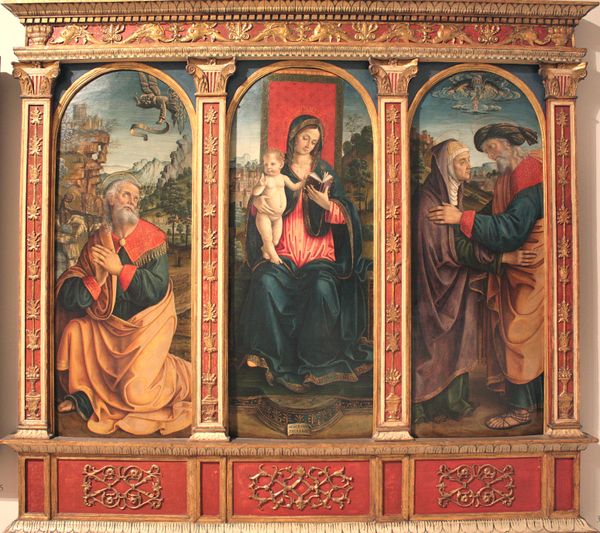
panel, painting, oil-paint
#
portrait
#
panel
#
painting
#
oil-paint
#
oil painting
#
group-portraits
#
genre-painting
#
history-painting
#
northern-renaissance
#
early-renaissance
#
portrait art
Dimensions: 147 x 90 cm
Copyright: Public domain
Editor: This is "Virgin and Child, Saint Catherine and Saint Barbara," painted around 1510 by Quentin Matsys. It's an oil painting on a wood panel triptych. What I immediately notice is the incredible detail in the fabrics; you can almost feel the weight and texture. What are your thoughts when you see it? Curator: My focus is drawn to the means of production. Oil paint, even then, was becoming increasingly accessible, influencing not just the artistic possibilities, but the art market as a whole. But consider, too, the panel itself: sourced from a specific tree, prepared by specific hands, perhaps under guild restrictions. How do these material processes reflect the economic realities of the time? Editor: That's interesting, I hadn't thought about the guilds! It makes me think about the level of craftsmanship involved versus the growing commercial aspect of art at that time. Curator: Exactly! The use of expensive pigments – think of the deep reds and blues – speaks volumes about patronage and trade routes. Were these colors locally sourced or imported? How did the availability of such materials impact Matsys' artistic choices? Editor: It does seem like the richness of the colors really was dependent on those trade networks. Curator: It’s all about the material conditions. The underdrawing too; perhaps visible with infrared reflectography. Can we deduce his workshop practices from that material evidence? Also, how was this altarpiece commissioned, and what socio-economic forces were at play in its creation? Editor: So, really digging into how each piece, no matter how small, had significance from an economical standpoint at the time. It shows art, history, and material culture intersect in so many different ways. Curator: Precisely. This triptych becomes a tangible record of 16th century exchange, labor and religious devotion all at once!
Comments
No comments
Be the first to comment and join the conversation on the ultimate creative platform.
